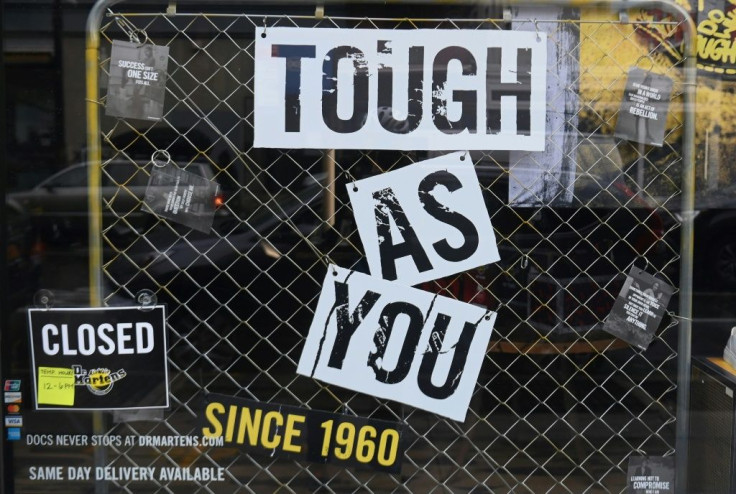US Economy: Unemployment Numbers In March Unlikely To Show Coronavirus Impact

KEY POINTS
- March unemployment statistics were collected the week of March 12, before social distancing and shelter-in-place orders took effect
- Prediction is for rate to rise 0.2 points to 3.8%
- Initial jobless claims this week could approach 5.5 million
The federal government releases March unemployment figures Friday but economists say the numbers may not yet reflect the impact of coronavirus layoffs despite record filings for initial unemployment claims.
Grant Thornton chief economist Diane Swonk said Tuesday the figures from the Bureau of Labor Statistics may show only a 0.2 point uptick to 3.8% from February largely because of the way the federal government collects its data despite a record 3.28 million initial unemployment claims increase last week and a possible 5.5 million new filings this week as layoffs across the country surge.
“We already know that the fall in employment is apocalyptic. The survey data will eventually catch up to that reality. Even though that may come as soon as the April employment report in one month, the interim period will feel like an eternity,” Swonk wrote in her analysis.
The St. Louis Federal Reserve predicted as many as 47 million Americans could lose their jobs in the second quarter, pushing unemployment to 32%, eclipsing the 24.9% rate in 1933 at the depths of the Great Depression. More Recently, unemployment reached 10.1% in September 1982 and 10% in October 2009 during the Great Recession.
BLS, however, surveyed households the week of March 12, before President Trump announced federal government social distancing guidelines and many state and local officials issued shelter-in-place orders that closed bars, restaurant dining rooms and nonessential businesses across the country. The orders are expected to remain through April and could extend into May.
“The largest drop in jobs is expected to be in leisure and hospitality as major conferences were canceled in late February. Traditional retailers will continue to be hit with the exception of big box discounters and grocery stores,” Swonk wrote.
“We started to hoard toilet paper, hand sanitizer and bleach wipes before shelter-in-place orders went into effect. We are expecting the number of professional hires to slow to a crawl. Healthcare jobs are expected to remain strong for March; the closing of dental offices and smaller clinics mostly occurred after the survey week.”
At the same time, unemployment already was increasing the first week in March when initial unemployment claims surged to 282,000 from 232,500 the previous week.
“The [March] unemployment rate lags and is expected to rise to 3.8%. That figure is expected to surge well into the double digits in April,” she said.
© Copyright IBTimes 2024. All rights reserved.





















